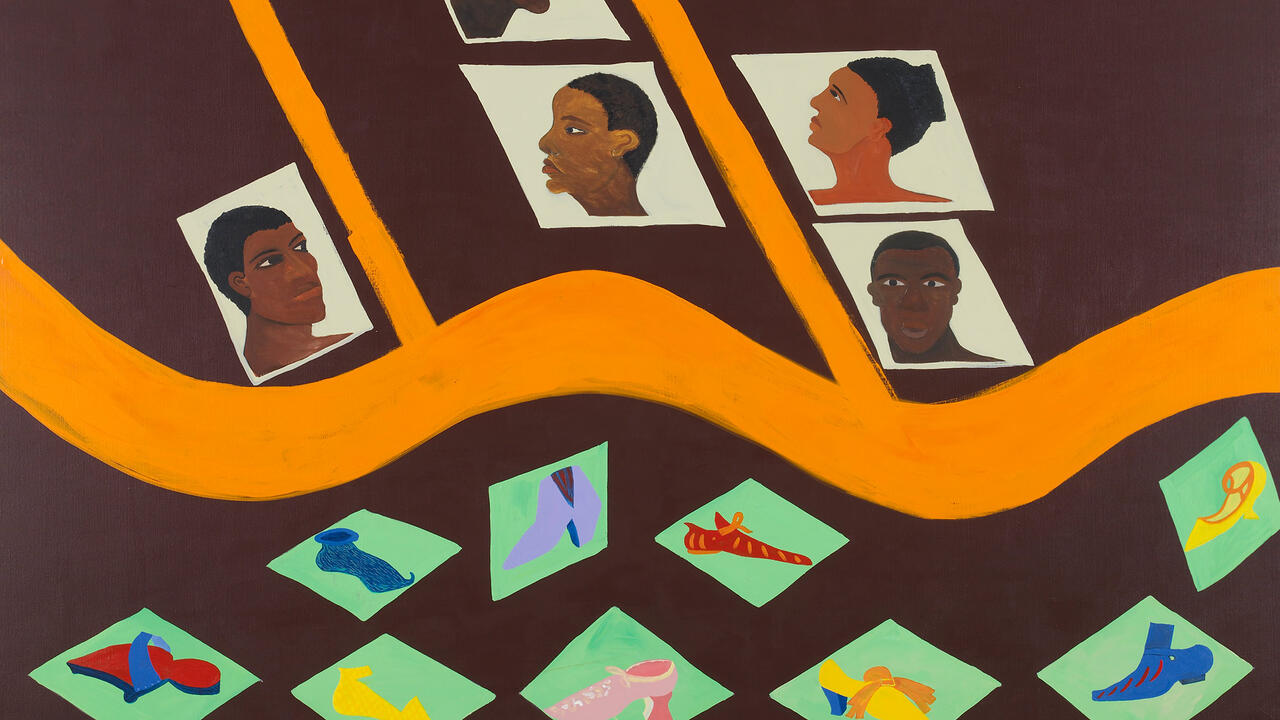Rosalind Nashashibi
Institute of Contemporary Arts, London, UK
Institute of Contemporary Arts, London, UK

The literary convention of sylvan eroticism – whether derived from Greek myth, fairy tales or the several examples in Shakespeare – depends on an image of the forest as darkling, organic antipode to the clarity and reason of urban culture. But, as the convoluted and courtly foursomes of A Midsummer Night’s Dream (1600) demonstrate, woodland frolics can be just as archly coded and constrained as everyday life. Rosalind Nashashibi’s Jack Straw’s Castle (2009) – a 16mm film shot at a wooded gay cruising spot on Hampstead Heath, London – is in part a study of ritual approach to the main (unseen) event: a scenographic composition of silhouettes at dusk and sidelong glances at the artist’s half-hidden camera. In its second half, Nashashibi records, at night, an elaborate array of film lights and attendant technicians whose apparent task is to fake a golden glow in the dark and vacant woods.
Jack Straw’s Castle – the title is itself a ruse: the film is named for a Hampstead pub, not the UK’s Secretary of State for Justice – is all about the time and space of rehearsal: in both halves of the film, the milieu is male and the rules of the ritual being enacted remain enigmatic to the viewer, whose gaze is both an invasion of privacy and an invitation to perform. (Nashashibi’s own mother appears in the second half of the film, apparently playing the director for whom the whole spectacle is being composed.) A theatrical rehearsal, as Shakespeare’s ‘rude mechanicals’ discover, is a curious space and time in which one performs the role of actor and acted – the mask slips, unfinished scenery fails to convince, timings are botched and bathos or obscenity intrudes: ‘I kiss the wall’s hole, not your lips at all.’ The film folds back on itself, suggesting that its verité first half is a carefully erected sham.
As part of Nashashibi’s most expansive solo show to date, Jack Straw’s Castle was the more suggestive of two new works concerned with aspects of rehearsal and performance. The ICA’s first room was given over to ‘In Rehearsal’ (2009), a series of black and white photographs (and the recorded sound) of preparations for a selection of fragments from Mozart operas. A portion of authentically raked stage is stranded incongruously in the rehearsal room, like a skateboard ramp; actors support cardboard cut-outs of child performers not present at the rehearsal; on the soundtrack, sublime fragments of song suddenly broke off into casual conversation. The effect was to make the rehearsal – that is, the strenuous attempt to guarantee a successful illusion – seem like a shoddy remake of the ‘real’ performance, to reverse the priority of preparation over finished product.
In fact, the displaced or deceptive remake was a recurring motif in the exhibition, Nashashibi’s customarily anthropological practice – seen in early films such as Midwest (2002) or Hreash House (2004) – here frankly embraces the fictive elements that have always been present. In The Prisoner (2008), she obliquely restages a scene from Chantal Akerman’s feature film The Captive (2000), itself an adaptation of the eponymous fifth volume of Marcel Proust’s À la recherche du temps perdu (In Search of Lost Time, 1913–27), in which the narrator obsessively tracks the movements of his faithless lover Albertine Simonet. In Nashashibi’s austere rendering, the camera follows a young woman (played by the artist Anna Gaskell) through the concrete labyrinth of London’s Southbank Centre, her face hidden and her high heels reverberating in the Brutalist precincts. The 16mm film is threaded into a second projector, so that the chase continues, six seconds later.
This sense of a subtle shift of chronology or perspective was continued in Bachelor Machines Part 2 (2007) – another partial remake, this time of Alexander Kluge’s Der Artisten in der Zirkuskuppel: Ratlos (Artists Under the Big Top: Perplexed, 1968). The artist Thomas Bayrle and his wife Helke rehearse attitudes and gestures from the film while Helke, in voice-over, delivers a lecture on technology as continuation of Christian ritual. On a second screen, re-filmed fragments of Nashashibi’s earlier Eyeballing (2005) suggest a technological anthropomorphism. Eyeballing itself is perhaps Nashashibi’s signature investigation of both ritual male display and the visual feints of the inanimate world. Anonymous objects and surfaces (an electrical socket, a toothbrush, patches of wall and flooring) reveal schematic faces, while outside a Manhattan police station, officers disport themselves in poses of professional vigilance and casual machismo: the two comically combined as one cop blatantly checks the rear of a passing woman. Before Nashashibi’s semi-surreptitious gaze, watcher and watched, actor and prop, are simultaneously translated.






















